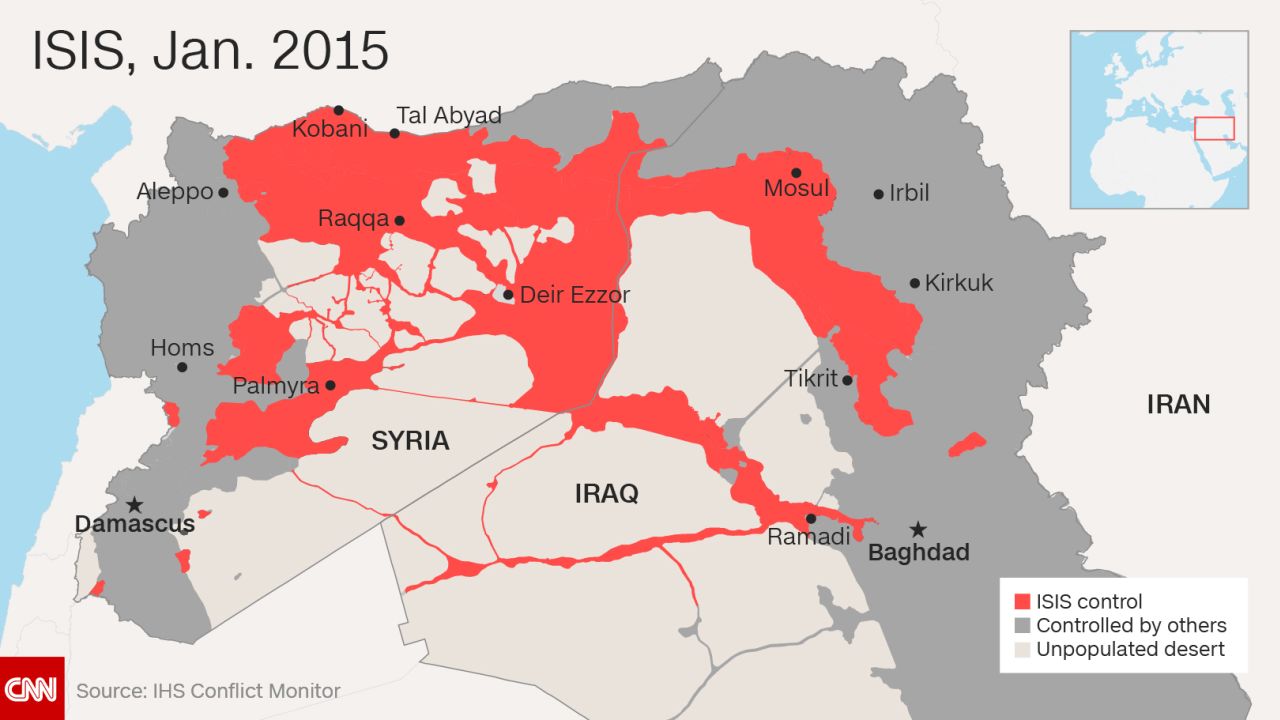ISIS is arguably the most successful militant group ever, seizing huge chunks of Iraq and Syria, declaring itself a state and governing territory for several years and counting.
But where did ISIS come from? What does it control? And how does it govern? CNN explains.
Where did ISIS come from?
The group began in 2004 as al Qaeda in Iraq, before rebranding as ISIS two years later. It was an ally of – and had similarities with – Osama bin Laden’s al Qaeda: both were radical anti-Western militant groups devoted to establishing an independent Islamic state in the region.
But ISIS – unlike al Qaeda, which disowned the group in early 2014 – has proven to be more brutal and more effective at controlling territory it has seized.
ISIS put governing structures in place to rule the territories it conquers once the dust settles on the battlefield. From the cabinet and the governors to the financial and legislative bodies, ISIS’ bureaucratic hierarchy looks a lot like those of some of the Western countries whose values it rejects – if you take away the democracy and add in a council to consider who should be beheaded.
Oil and land: What ISIS controls
ISIS spread fast, capturing large territories on both sides of the Iraq-Syria border. Then, in June 2014, it declared a caliphate – a state, governed by an Islamic leader.
Its territory includes oil fields, which give the group a major source of income.
Energy expert Luay al-Khateeb said that at the height of ISIS power, the oil was finding its way to the black market and could have been making ISIS up to $3 million each day.
But ISIS has been pushed back on many fronts, losing 12% of its territory in in 2016, according to one expert estimate.
Does that mean ISIS is becoming less dangerous?
Probably not. Outside of the territory it controls in the Middle East, ISIS both directs and inspires acts of terrorism around the world.
More than 2,000 people have been killed in those attacks, which have occurred in at least 29 countries outside of Iraq and Syria, according to CNN calculations.

And what exactly is this group’s name?
They want to be known as the Islamic State, but no government in the world recognizes them as a state, and many Muslims are appalled by their definition of Islam.
ISIS stands for the Islamic State in Iraq and Syria. ISIL means basically the same thing - the Islamic State in Iraq and the Levant.
There is another name that the group rejects, but which many officials use: Daesh.
It’s an Arabic acronym that means the same thing as ISIL, but sounds like an Arabic word meaning “stomp on.” And ISIS hates it so much they have threatened to cut out the tongue of anyone who uses it.
CNN’s Atika Shubert, Nima Elbagir and Ivana Kottasova contributed to this report.





















